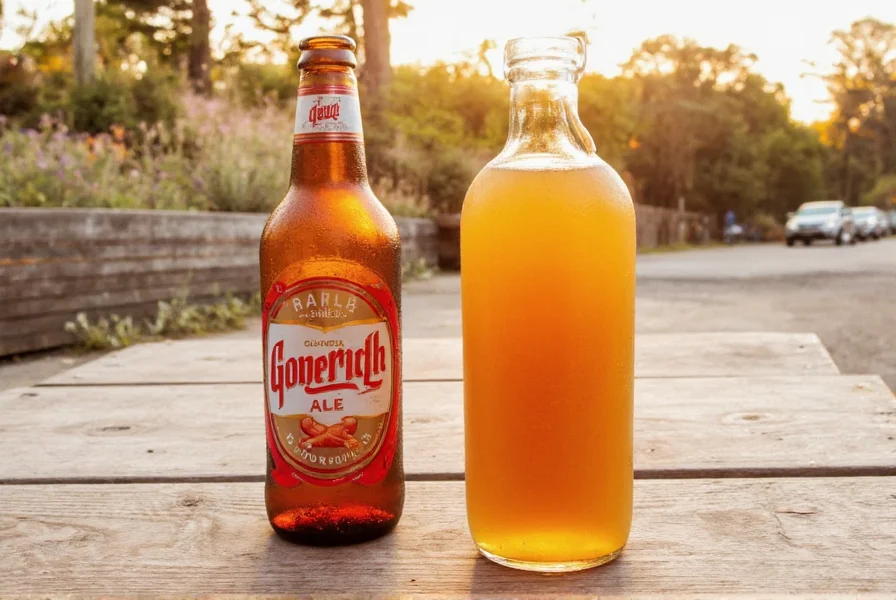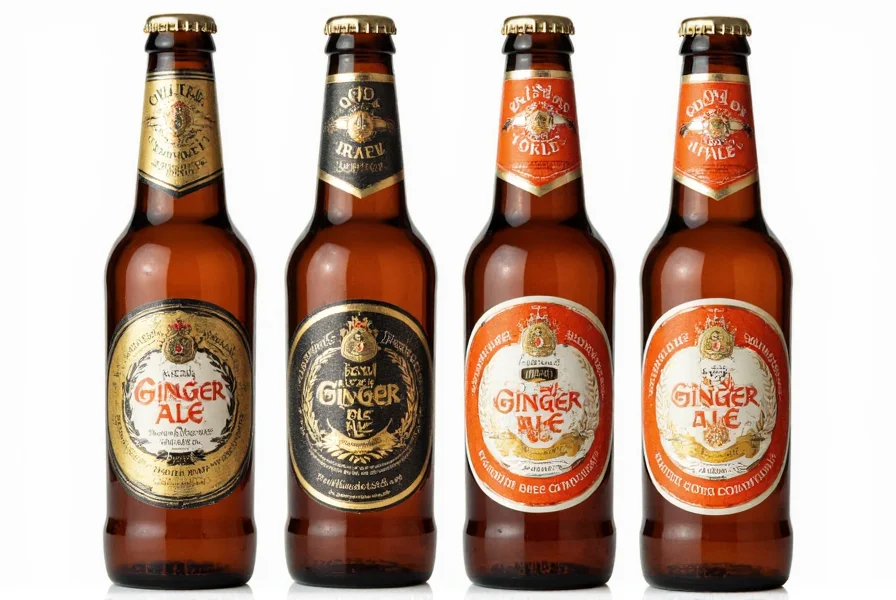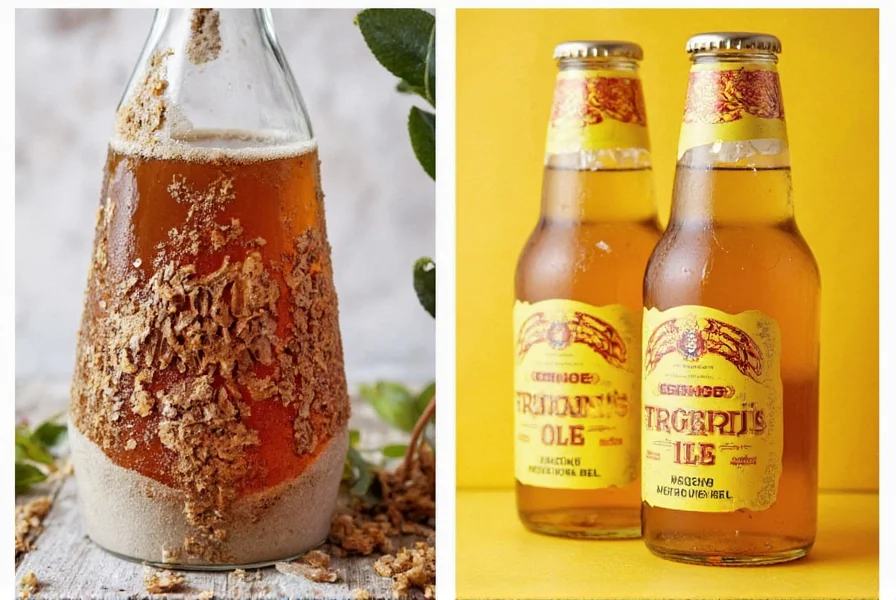When you see "real ginger ale" on a label, you're looking at a beverage made with genuine ginger root as the dominant flavor component. This distinguishes it from many mainstream ginger ale products that rely primarily on ginger flavoring or extracts with minimal actual ginger content. The difference affects not just taste but also potential health properties and production methods.
What Makes Ginger Ale "Real"
The term "real ginger ale" refers to ginger ale that uses fresh or dried ginger root as its primary flavoring agent, with ginger comprising a significant portion of the ingredients. Traditional real ginger ale undergoes a natural fermentation process where ginger, sugar, water, and a fermentation starter (like ginger bug or yeast) interact to create carbonation and complex flavors.
Commercial ginger ales, by contrast, often use ginger flavoring or extracts with much lower ginger content. Many mass-produced versions contain high fructose corn syrup, artificial flavors, and carbonation injected under pressure rather than developed through fermentation. The ginger presence in these products is frequently minimal—sometimes as low as 0.1% ginger extract.
| Characteristic | Real Ginger Ale | Commercial Ginger Ale |
|---|---|---|
| Ginger Content | Substantial (2-5% or more) | Minimal (often <0.5%) |
| Carbonation Method | Natural fermentation | Mechanical injection |
| Sweetener | Raw sugar, honey, or cane sugar | High fructose corn syrup |
| Flavor Profile | Spicy, complex, warming | Mild, sweet, one-dimensional |
| Production Time | Days to weeks | Hours |
Historical Context of Authentic Ginger Ale
Ginger ale originated in Ireland and Canada during the mid-19th century as a fermented beverage created for medicinal purposes. Early versions used fresh ginger, sugar, water, and a symbiotic culture to produce a naturally carbonated drink with therapeutic properties. Pharmacists commonly recommended it for digestive issues.
The "golden" or dry style of ginger ale emerged later as a lighter, less spicy alternative to the original "dark" or traditional style. Most commercial ginger ales today follow this golden style, which contains significantly less ginger than the original formulations. Understanding this historical shift explains why "real" ginger ale has become a distinctive category separate from mainstream products.

Identifying Genuine Ginger Ale Products
When shopping for authentic ginger ale, check the ingredient list for these markers of quality:
- First ingredient is ginger - Real ginger ale lists ginger or ginger root as the primary ingredient
- Natural sweeteners - Look for cane sugar, honey, or maple syrup rather than high fructose corn syrup
- No artificial flavors - Authentic products won't contain "natural flavors" or artificial flavorings
- Fermentation indicators - Terms like "naturally fermented" or "craft brewed" suggest traditional methods
Brands that typically produce real ginger ale include Maine Root, Bruce's Ginger Ale, and Bundaberg (though Bundaberg uses concentrated ginger juice rather than fresh root). Small-batch craft producers often create the most authentic versions with substantial ginger content.
Health Aspects of Real Ginger Ale
While all ginger ale contains some ginger properties, real ginger ale offers more significant potential benefits due to its higher ginger concentration. Ginger contains gingerol, a bioactive compound with anti-inflammatory and antioxidant properties. Traditional uses of ginger include:
- Supporting digestion and reducing nausea
- Alleviating motion sickness
- Reducing muscle pain and soreness
- Supporting immune function
However, it's important to note that ginger ale should not be considered a medical treatment. The sugar content in even real ginger ale may offset some potential benefits for certain health conditions. For therapeutic effects, fresh ginger or ginger tea typically provides more concentrated benefits without added sugars.

Making Authentic Ginger Ale at Home
Creating real ginger ale at home allows complete control over ingredients and ginger concentration. A basic recipe involves:
- Grating fresh ginger root (3-4 inches per liter of water)
- Creating a ginger bug starter with additional ginger, sugar, and water
- Combining ginger tea, sugar, and the ginger bug
- Allowing natural fermentation for 2-7 days
- Bottling and refrigerating to stop fermentation
Home preparation typically yields a beverage with significantly more ginger flavor and potential benefits than commercial products. The fermentation process also creates beneficial probiotics, though these diminish over time in the refrigerator.
Understanding Ginger Ale Labeling
Food labeling regulations allow manufacturers to use terms like "ginger ale" even with minimal ginger content. The FDA doesn't specify minimum ginger requirements for products labeled as ginger ale. This regulatory gap means consumers must carefully examine ingredient lists rather than relying on front-label claims.
Terms like "made with real ginger" can be misleading—this might mean the product contains some real ginger but predominantly uses artificial flavors. Look for specific ginger content percentages, which reputable craft producers often disclose. Products with "ginger juice" as an ingredient generally contain more actual ginger than those listing "ginger flavor" or "natural flavors."
Conclusion
Real ginger ale represents a return to the beverage's traditional roots, featuring substantial ginger content, natural fermentation, and complex flavor profiles. While commercial ginger ales dominate supermarket shelves, authentic versions offer a spicier, more nuanced drinking experience with potential digestive benefits. When seeking genuine ginger ale, prioritize products with ginger as the primary ingredient and minimal artificial components. Whether purchasing craft-brewed options or making your own, real ginger ale provides a distinctive alternative to the milder commercial varieties that have become standard.
Frequently Asked Questions
What's the difference between real ginger ale and regular ginger ale?
Real ginger ale uses substantial amounts of actual ginger root as the primary flavoring ingredient, typically produced through natural fermentation. Regular commercial ginger ale often contains minimal ginger (sometimes less than 0.5%), using ginger extract or artificial flavors instead, with carbonation injected mechanically rather than developed through fermentation.
How can I tell if ginger ale is real or authentic?
Check the ingredient list for ginger or ginger root as the first ingredient, natural sweeteners like cane sugar rather than high fructose corn syrup, and the absence of artificial flavors. Authentic products often specify ginger content percentage and may use terms like "naturally fermented" or "craft brewed" rather than "carbonated beverage."
Does real ginger ale have health benefits?
Real ginger ale contains more gingerol (the active compound in ginger) than commercial varieties, potentially offering digestive benefits and nausea relief. However, the sugar content may offset some benefits, and it shouldn't be considered a medical treatment. For therapeutic effects, fresh ginger or ginger tea typically provides more concentrated benefits without added sugars.
Why is most store-bought ginger ale not considered real ginger ale?
Most commercial ginger ales prioritize shelf stability, consistent flavor, and lower production costs over authentic ginger content. They typically use minimal ginger extract (sometimes as low as 0.1%), artificial flavors, and high fructose corn syrup, with carbonation injected mechanically rather than developed through natural fermentation. FDA regulations don't require minimum ginger content for products labeled as ginger ale.











 浙公网安备
33010002000092号
浙公网安备
33010002000092号 浙B2-20120091-4
浙B2-20120091-4